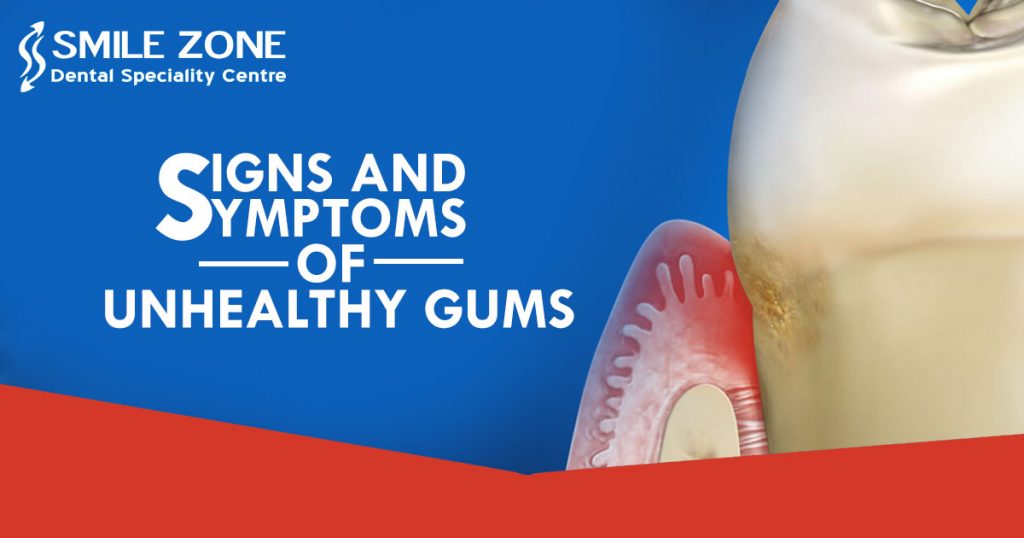Signs And Symptoms of Unhealthy Gums
What Is Gum Disease?
Gum disease is related to bacterial growth in the mouth. It causes inflammation which can affect the bones that support your tooth. According to studies, it is said that the people around the age of 35 are most affected by this problem. If the treatment is not started at the right time it may lead to several health problems such as heart disease, stroke, and diabetes. So, it is best to consult the dentist at early stage to get rid of this disease.
How Does It Starts?
Gum disease are divided into three stages:
- Gingivitis- Bacteria in plaque gets build up, which causes redness and pain around the gum. One of the ways to get rid of this problem is daily brushing and flossing. This will help to get rid of the plaque.
- Periodontists – If you do not treat the problem of plaque it will further affect the bones that support your teeth. At this stage, it is best to visit the best dental clinic and start the treatment before your teeth get more damaged.
- Advanced Periodontists- You will lose your teeth because the bones and fibers that support your teeth are destroyed completely. You are not able to bite properly.
What Are The Causes And Symptoms?
- If a person smokes every day it will make the gums harder.
- The person with poor oral hygiene will mostly face this problem.
- Prolonged illness and patient who had cancer and HIV earlier will also face this problem. Patient’s who had diabetes have also high chances to get affected by this disease.
- When you bite you will notice a change in your tooth that how they fit together.
- There will be redness and swelling around your gums.
- You will notice bad breath in your mouth.
How To Keep Gums Healthy?
There are some factors which will help to keep your gums healthy. Some of them are:
- In the early stage, you can get rid of this problem if you maintain good oral hygiene. Brush twice a day.
- Flossing will help to get rid of food particles between the teeth and the gum lines.
- Replace your toothbrush at least every four to three months.
- The Electric toothbrush will be more effective in removing plaque.
- Take products that increase saliva production such as milk and cheese.
- Eat fruits and vegetables that contain high-fiber.
You can say that the patient can get rid of this problem if they take care properly and follow good oral hygiene. If the problem doesn’t go away in a week or two consult the dentist to get the proper treatment.


No Comments